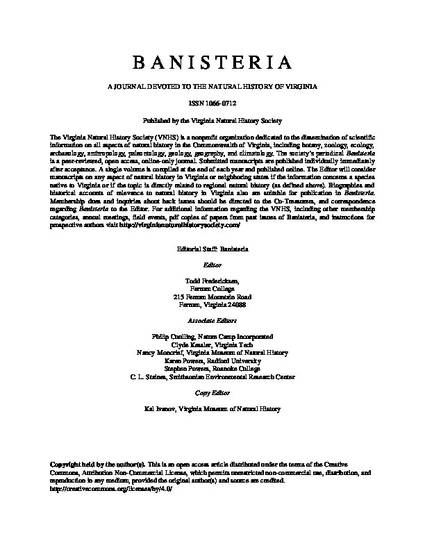
The Peaks of Otter Salamander (Plethodon hubrichti; POS) is a montane species found at elevations above 442 m within a 117 km2 area of the Blue Ridge Mountains in central Virginia. In allopatric areas (areas without the Eastern Red-backed Salamander, P. cinereus, a known competitor), POS body condition was hypothesized to decline both above and below some optimal elevation. Decreased condition at lower elevations would most likely be due to increased temperatures and lower relative humidities, which may adversely affect the ability of salamanders to forage effectively on vegetation due to desiccation risk. Decreased condition at elevations above the optimum would likely be caused by a shortened active season due to the colder temperatures at these elevations. In October 2018, POS were collected by turning over rocks and logs at eight sites ranging in elevation from 518 to 1143 m. The mass and snoutvent length (SVL) of female POS were measured at each elevation. From these SVL and mass data, residual salamander condition index values were calculated and regressed against elevation. The relationship between salamander condition and elevation was curvilinear with highest POS condition at 1025 m (0.18). Below this elevation POS condition declined linearly over approximately 375 m to a low of -0.17. Above 1025 m, POS condition declined linearly over approximately 125 m to 0.07. The residual condition index followed similar trends across elevations for density and reproductive output for this species, making it a simple and less time-consuming surrogate measure for these demographic variables. These results support the importance of conserving mature, hardwood forests, particularly at lower elevations, which represent fragile environments for POS.
